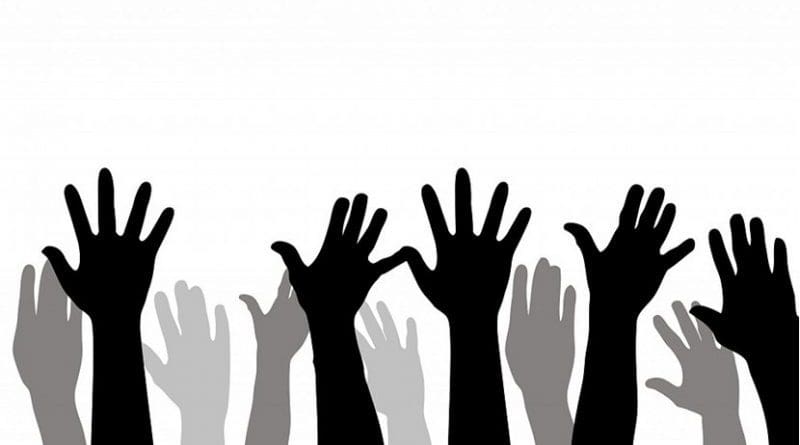A New Democratic Wave Is Emerging? – OpEd
In the most recent snap elections in Moldova held on 11 July 2021, the pro-presidential liberal pro-European Party of Action and Solidarity won a 53 % majority of the parliamentary seats leaving its main rival, the Electoral Block of Socialists and Communists, well behind with only 27 % of votes.
Notably, Maia Sandu, who formerly led the PAS, in the runoff in the presidential elections in December 2020, convincingly defeated with 58 % in her favour the socialist pro-Russian incumbent president Igor Dodon. It should not be a surprise as this victory of the liberal democratic forces is only the latest in this emerging trend. Perhaps it is too early to call it a trend, but the events of the recent few years in the number of the former Soviet countries give some reason for optimism.
Several societies in the post-Soviet space have experienced within the last few years a string of events which can be called the ‘electoral revolutions’. Indeed, in Armenia in 2018 and then again in 2021, in Ukraine in 2019, in Moldova in 2020, and again just now, the liberal democratic forces were able to win in their national elections defeating the old and corrupted regimes.
The mass protests known as the Velvet Revolution in the spring of 2018 in Armenia led to the replacement of the semi-authoritarian and corrupt regime of the prime minister Serzh Sargsyan by the united anti-corruption democratic forces led by Nikol Pashinyan.
In the recent snap parliamentary elections held on 20 June 2021 and called due to a political crisis caused by Armenia’s defeat in the Second Nagorno-Karabakh War in 2020, Pashinian’s party Civil Contract again got the majority of the vote. Armenians once more supported the liberal democratic forces, thus clearly indicating their support for an open and participatory political order and the continuation of the reforms directed towards the democratic consolidation and the rule of law.
Ukraine’s electoral revolution in the 2019 presidential and snap parliamentary elections resulted in a smashing victory of a complete novice in politics Volodymyr Zelenskiy and his party, Servant of the People, convincingly defeating the corrupt old political elite, which was not interested in the deep political and economic reform removing the obstacles towards consolidated democracy and the rule of law.
All those events occurred in those countries of the former Soviet Union, which did not slide back into authoritarianism or even into totalitarianism as the majority of the post-Soviet societies like Russia, Belarus or countries of Central Asia.
These societies were stuck in the limbo of semi-authoritarian semi-democratic corrupt hybrid regimes. Such mixed regimes, also known as competitive authoritarianism, combine features of both democracy and authoritarianism. They seriously lack the rule of law and strong democratic institutions as the major preconditions of the consolidated democracy. However, such regimes tolerate competition for political office, and the elections are regularly held.
In these regimes, the incumbents usually representing the old corrupted elites use a variety of techniques to set an uneven playing field to ensure their reelection. The techniques include use of the administrative resource, the control of the major media, harassment of the opposition and civil society and even falsification of the electoral outcomes. That allows the political leadership to defeat the opposition and civil society forces and stay in power. But that is not always the case.
Unlike in the consolidated authoritarian regimes, the opposition forces can defeat the ruling regimes in certain circumstances. That occurred from the 1980s into the 2010s in the former Communist countries and beyond and were labelled Colour Revolutions. The Yellow Revolution in the Philippines in 1986, the Rose Revolution in Georgia in 2003 or the Orange Revolution in Ukraine in 2004 are just some examples of such movements.
However, many observers have noted that in the last decade, the tendencies of the democratic backsliding even in consolidated democracies and the rise of authoritarianism across the World had become evident. Some even argue that the growing support for authoritarianism and illiberal order comes not only from the corrupt elites but also from ordinary people, especially in post-Communist Europe.
Nonetheless, the recent electoral revolutions just described above may prove such worries too exaggerated. Such an optimistic outlook is also based on the fact that not just in semi-democratic regimes, but even in consolidated autocracies such as Belarus or in totalitarian regimes such as Iran or China (Hong Kong) where the mass protests in the last two years were eventually clamped down, people do not wish to tolerate undemocratic, illiberal and corrupt regimes anymore.
This is evident even in Communist Cuba, where protests began on 11 July 2021. After over six decades of totalitarian oppression, thousands of people were taking on streets throughout the country demanding not just improvement of their socio-economic conditions but also the end of the dictatorship. The protestors were chanting “We are not afraid” and “Freedom”. The government’s havy-handed responce pacified the people for now, but it is still unclear the possible outcome of these protests, as their causes have not been addressed.
Still, one thing is evident, the global fight for freedom is far from over. Hopefully, today we are witnessing the emerging new wave of democratisation across the World.
*Oleg Chupryna, PhD Candidate, John & Pat Hume Doctoral Scholar, Department of Sociology, Centre for European and Eurasian Studies, Maynooth University

